
Agni is one of the oldest gods in Sanatan culture. The oldest scriptures of Rig Veda contain many hymns praising Agni. The literal meaning of Agni is fire; Agni is the god of fire, which is one of the necessary forces of life. Fire is also one of the 5 basic elements (Pancha-tatwa). It is very significant in Sanatan culture because without fire, yagna, marriage, puja or any auspicious task is incomplete.
While chanting mantra, we often pronounce the word ‘Swaha’. This has a significant relation with Agni. Swaha is actually the wife of Agni Dev. She desired to become Agni’s wife and after a long period of her devotion towards him, Agni accepted her as his wife. While we perform yagna, we take some grains or ghee or material and chant the mantra. In front, there remains a yagna-kunda with sacrificial fire. As the mantra ends with ‘Swaha’, we put the items in the sacrificial fire of the yagna-kunda. This is to signify that through his wife, Swaha, we are feeding Agni dev to please him and other gods that we worship. Without pronunciation of ‘Swaha’, gods refuse to take the sacrifices.
Agni always tells the truth and this character of Agni is like a double-edged sword, because it consumes everything without thinking. It can burn an innocent child, and also burn a palace of a torturing king with same wrath. This character of Agni is actually because of a curse. In Sanatan culture, while a groom and a bride get married, they have to revolve 7 times around a yagna-kunda. Actually, they have to keep Agni as a witness of their marriage. This is how Indian marriages get socially accepted, so that in future one party tries to nullify the marriage, the other party can prove them wrong. This is the reason why prenuptial agreements are illegal in India or for any Hindus. Once, we get socially married, keeping Agni as a witness, that marriage is considered for life-time (or 7 life-times!!). Our culture is originally an anti-divorce culture. Our original culture does not validate marriages based on materialism.
Anyway, let’s come back to the story of the curse. Once, there lived a sage couple named Bhrgu and Puloma. There was also a demon called Puloman. When Puloma was an infant, Puloman made a pact with her father that after she gets older, Puloman will marry her. Anyway, Bhrigu and Puloma were married and after a few days, Puloma became pregnant. One day, Puloman came in disguise to see Puloma while Bhrgu was absent, and fell in love with her. He claimed that Puloma’s father promised to give her to Puloman, rather than anyone else. At that time, Agni was present inside a yagna-kund nearby. Puloman asked Agni if Puloma should be his. Agni fell in dharma-sankaat and ultimately, he said that the promise given by Puloma’s father was just words, whereas the marriage of Bhrigu and Puloma is validated by action; so, Puloman has no right over Puloma. However, angry Puloman tried to abduct Puloma. Meanwhile, Puloma gave birth to a child. The child was so glorious that the demon burned down to ashes from the glory. Afterwards, the child vanished and Puloma sat there and kept crying. Meanwhile, Bhrigu came back and came to know about the whole scenario. He was angry at Agni for everything and cursed him that from that point of time, he would consume everything without thinking good or bad. This made Agni upset and he stopped functioning on earth. This created havoc in the world because, without fire, existence of life was at stake. When Brahma came to know about all these, he requested Agni to save the earth by giving fire and light. Brahma could not negate Bhrigu’s curse but instead he blessed Agni that from that point onward, anything that would come in touch with Agni, would get purified. This is why, we have seen instances like Sita’s agni-pariksha in history where she proved her purity with fire. In Sanatani culture, cremation is done for the same reason of purifying souls.
I have kept Agni as ‘the Hanged Man’ because in one hand, he is kind of stuck with his curse and on the other hand, he purifies with his blessing. We also have fire inside us, where we can let go our negative sides. On there other hand, if the fire comes from too much anger- it will burn us instead. So, Agni teaches us to make a decision after proper thinking.
Upright meaning
An Upright Hanged Man suggests that you need to see things from a different perspective. Perhaps the world is swirling around you and it seems that you are swimming upstream. Take a step back, figure out the direction of the stream, and follow it. Embrace the world as it is, not as you perceive it. In tarot, the Hanged Man card is often associated with surrender, letting go, and a new perspective. When the card is upright, it generally signifies positive traits such as surrender, letting go, and a willingness to see things from a new perspective. The upright Hanged Man may represent a person who is going through a period of transition or who is willing to sacrifice in order to gain a new perspective or insight.
Reverse meaning
A Reverse Hanged Man suggests that you are refusing to see things from a different perspective. Things are getting blocked up and you are refusing to acknowledge it. A Reverse Hanged Man warns of our stubborn ego misrepresenting a situation. Take a step back and remove your subjectivity in order to see a fuller picture. Course correct and follow the stream of objective reality. On the other hand, when the Hanged Man card is reversed, it may indicate negative traits such as resistance to change, a lack of sacrifice, or a refusal to see things from a new perspective. The reversed Hanged Man may represent a person who is stuck in old patterns or who is unwilling to let go of their old ways of thinking. It could also suggest a need to surrender and let go in order to move forward.
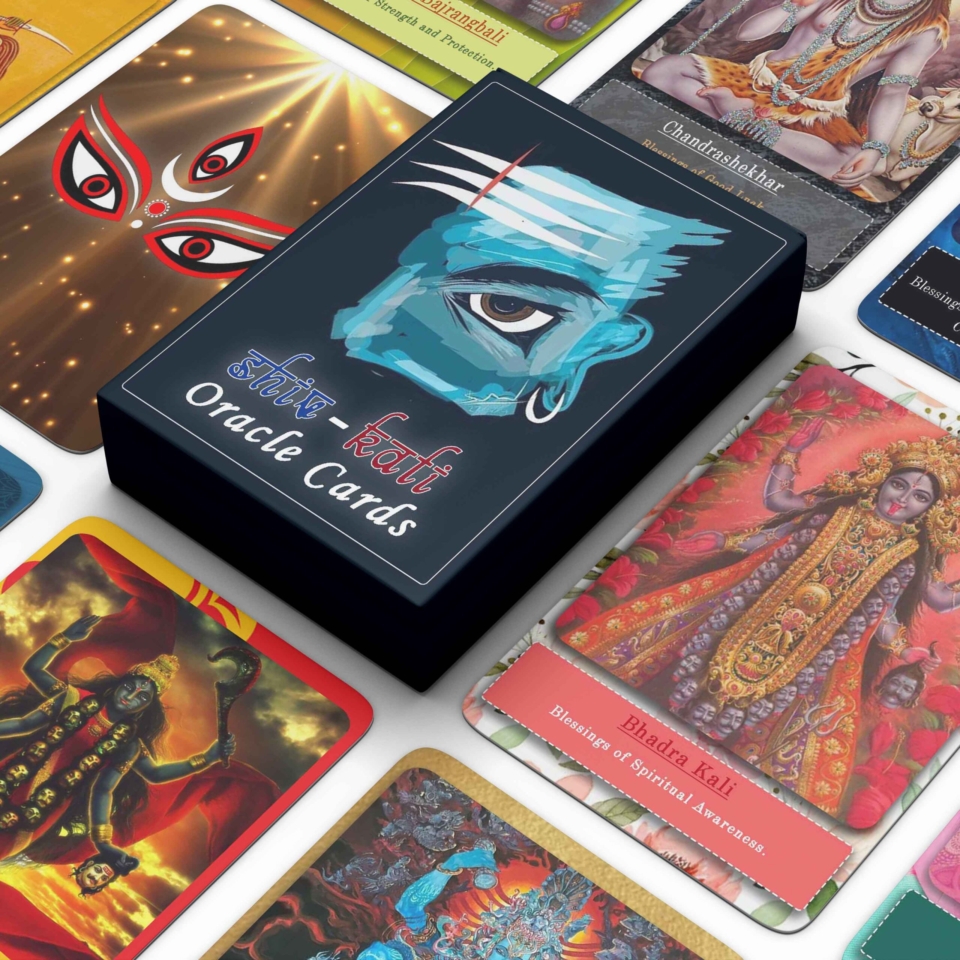

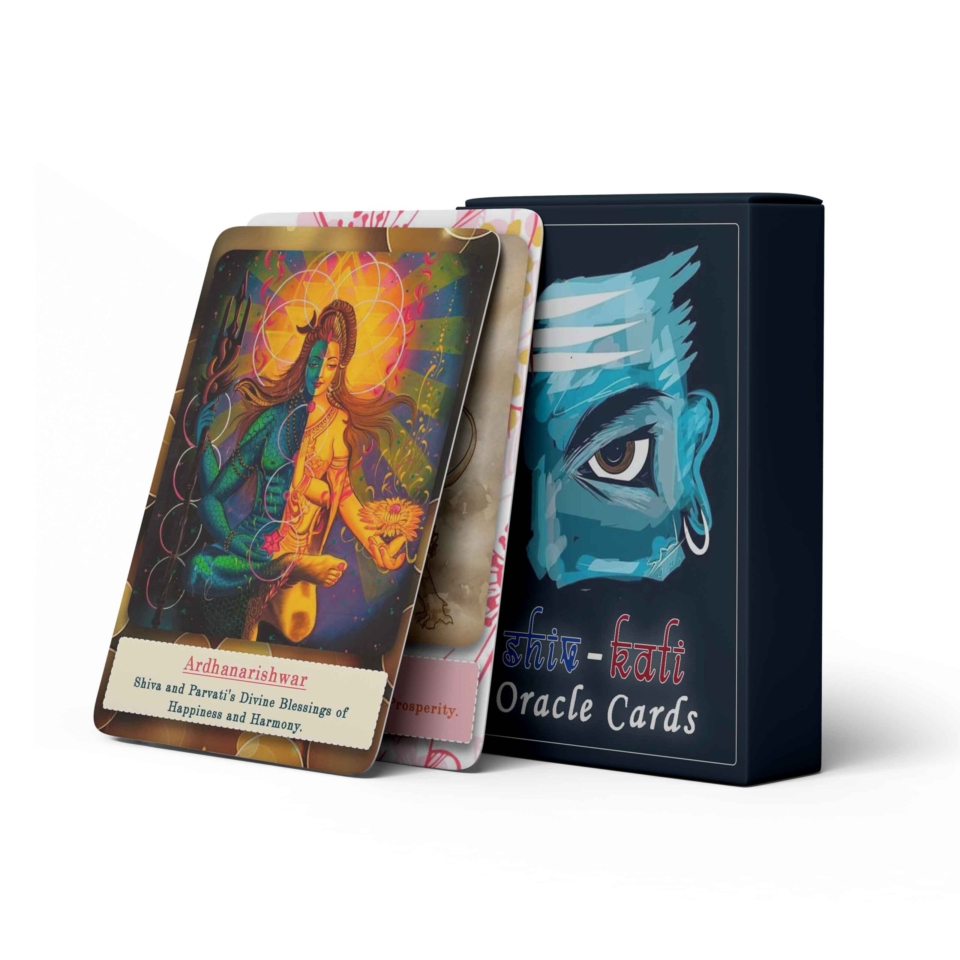
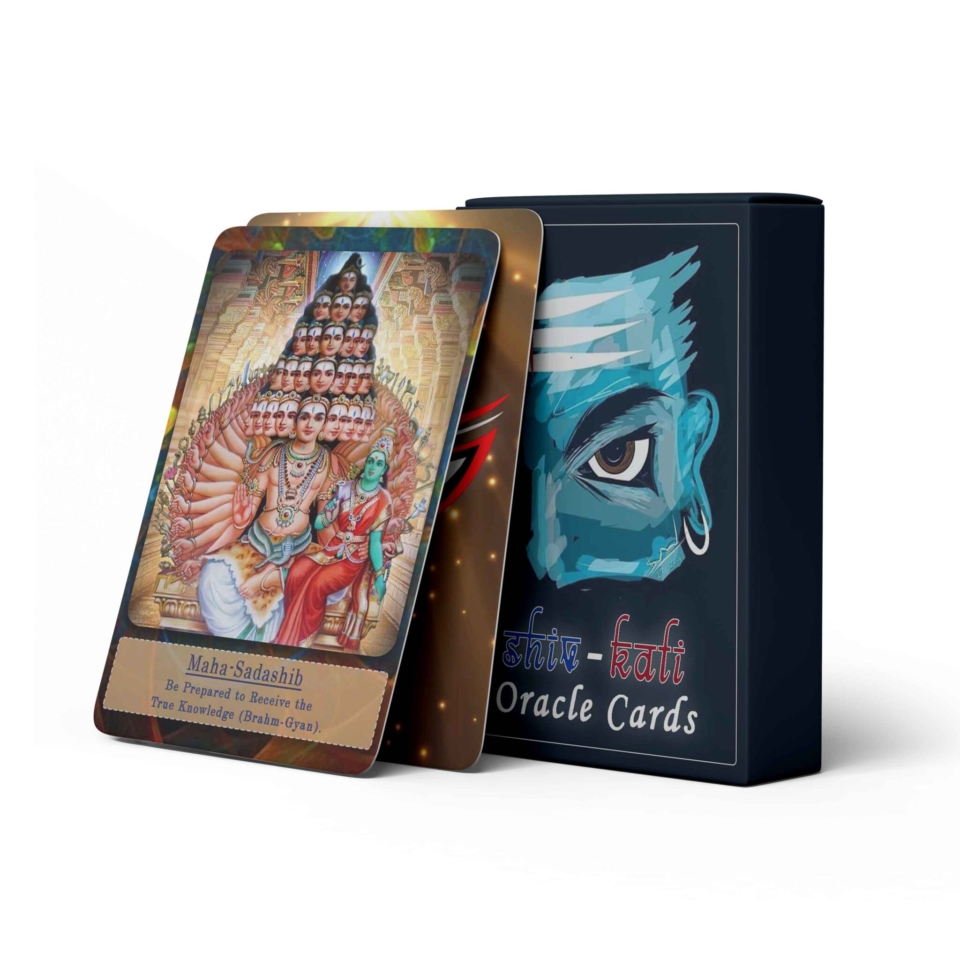
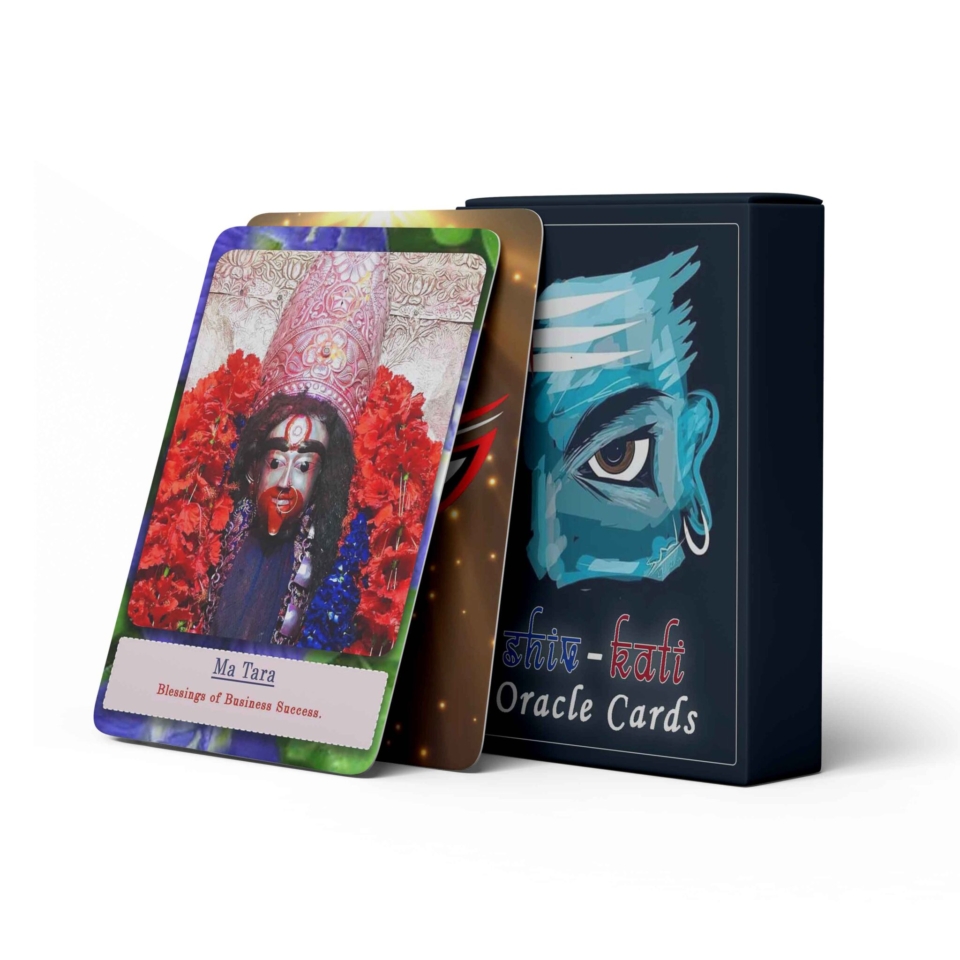

ShivKali Oracle Cards – pack of 24 Cards
- 350 Gsm paper with gloss lamination
- 2 pack designs to choose from
- Free guide materials
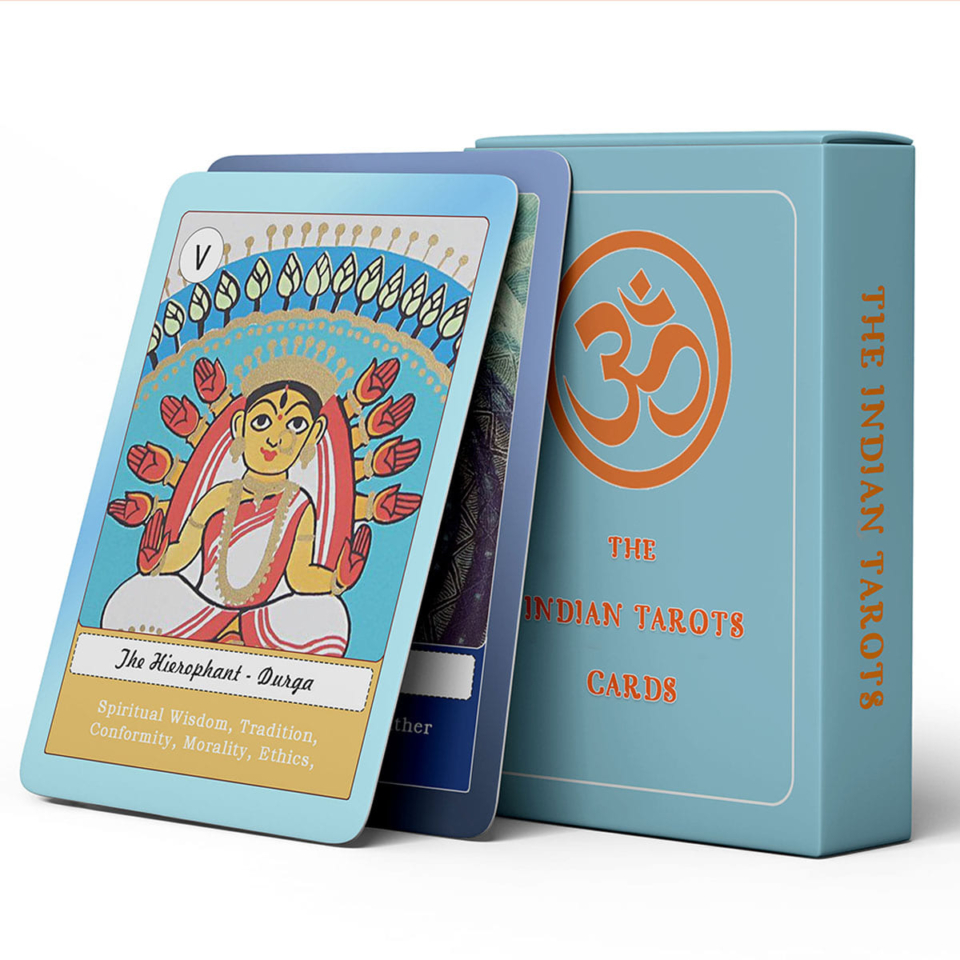

Indian Tarots – Major Arcana – collector’s edition of 22 cards
- 350 Gsm paper with gloss lamination
- Box
- Free guide materials

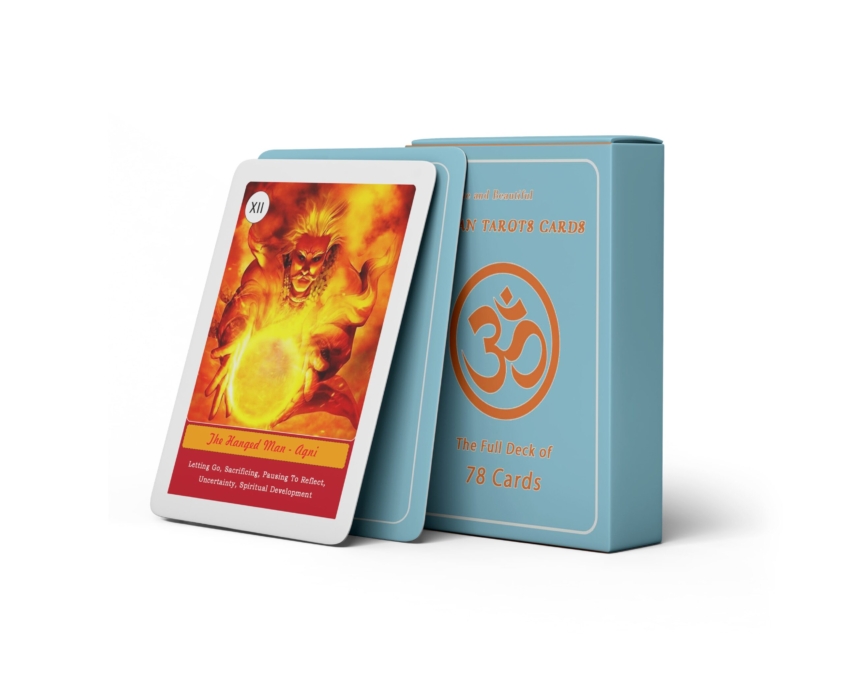
Add a Comment